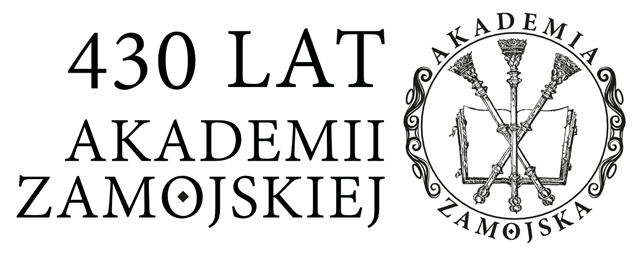Uwarunkowania przyrodnicze Ziemi Gnieźnieńskiej oraz o umiejętnym ich wykorzystaniu w państwie pierwszych Piastów
Kazimierz Tobolski
Abstrakt
The article attempts to sum up the most important results of own research works, as well as works of a group of colleagues and Ph.D. students. My research intensified in the years 1991-2001 owing to additional (part-time) employment at the Museum of the First Piasts at Lednica. The function considerably facilitated access to many study sites, and particularly permitted covering them with an extensive palaeoecological research programme in the scope of the ecology of the past. Some of the results were presented in an extensive three-volume text book for the exhibition “Central Europe in year one thousand”, unfortunately not displayed in Poland” (Tobolski 2000b).
A substantial part of the text constitutes descriptions of the basic methods of palaeoecological research, and presentations – specific “records” – of environmental information on the ecological past, obtained by the palynological method (analyses of fossil pollen grains and spores) and in the course of palaeobotanical analyses of macroscopic findings. An equally important research activity is obtaining relevant biogenic sediments: limnic and peatland sediments in which they were deposited as micro- and macrofossils. Limnic sediments are frequently deposited at considerable depths. They were obtained by means of state of the art devices for underwater and peatland corings. Sediments were also collected on my request by archaeologists-divers (Phot. 6), and peats were investigated particularly with the application of a chamber corer (Phot. 7).
Particularly much time was devoted to palynological analyses. In my opinion, they constitute the palaeoecological foundation. The most important graphic presentations of the obtained results are presented in Fig. 1: percent diagrams (1), cyclograms – pie charts (2), and isopole maps (3).
The environmental conditions in the age of the Baptism of Poland were not the same as today. In many cases, they were different or even opposite. In this article, the subject is narrowed down to the most important issues regarding both of the spheres: abiotic and biotic.
Abiotic sphere: A – climate: from approximately 900 to approximately 1400, the medieval warming took place. It permitted vegetation of plants with higher thermal requirements: millet (Panicum miliaceum), not cultivated today, as well as common grape vine (Vitis vinifera), and other thermophilic species.
B – the hydrology of the Gniezno Region was characterised by the abundance of surface waters and occurrence of numerous wetlands. A considerable contribution of lakes still distinguishes the area as the Gniezno Lakeland”. Wetlands and peatlands developed a specific network of barriers, undoubtedly useful for defence purposes.
C – mineral resources in the times of the First Piasts were abundant and diverse. They were applied in construction and even for consumption purposes (rock salt). The mineral in the form of salt diapirs (reaching the ground surface) occurs in the Wapno village and its vicinity. It is characterised by gypsum “domes” covering the diapirs, used as mortar – an adhesive for construction stones. The directions of distribution of some rock resources are illustrated in Fig. 4.
Ostrów Lednicki was a special place. It is an island with an area of approximately 7 hectares with a number of historical remains: residence with a palace chapel and baptism pools, embankment of impressive size, wooden island shore enforcements, and wooden bridges (discovered and investigated by archaeologists from Toruń). They connected Ostrów Lednicki to the west (so-called Poznań Bridge) and east (so-called Gniezno Bridge). In palaeo-phyto-geographic terms, the Gniezno Region is also evidently distinct. The former geobotanical form of the area shows the most abundant occurrence of hornbeam in the entire European range of occurrence of Carpinus betulus. The first very abundant occurrence of hornbeam in the Gniezno Region took place 3500-3000 years ago, followed by another – weaker and with a greater range, approximately 1500 years ago. The modern state of distribution over the last century is illustrated on the last isopole map.
The final part includes reproductions of title pages of the most important monographs with environmental descriptions of results of specialist analyses on Ostrów Lednicki, and in Gniezno and Giecz. It also mentions the social and research activity of the parish priest from Dziekanowice – Fr Dr. Franciszek Wawrzyniak (1884-1941). While a Catholic priest with the function of a parish priest, he studied biology at the University in Poznań, and defended his doctoral thesis on the (microscopic) flora of lakes in the Wielkopolska Region. He also initiated the construction of a wooden building – shelter on Ostrów Lednicki. I attempt to present the overview of the life
of the priest with particular emphasis on his scientific passion in a separate article.
Słowa kluczowe:
Gniezno, Ostrów Lednicki, GieczSzczegóły
Bibliografia
Statystyki
Autorzy
Zasady cytowania
Licencja

Utwór dostępny jest na licencji Creative Commons Uznanie autorstwa – Użycie niekomercyjne – Na tych samych warunkach 4.0 Międzynarodowe.


 Język Polski
Język Polski
 English
English
 Русский
Русский
 Slovenčina
Slovenčina
 Hrvatski
Hrvatski
